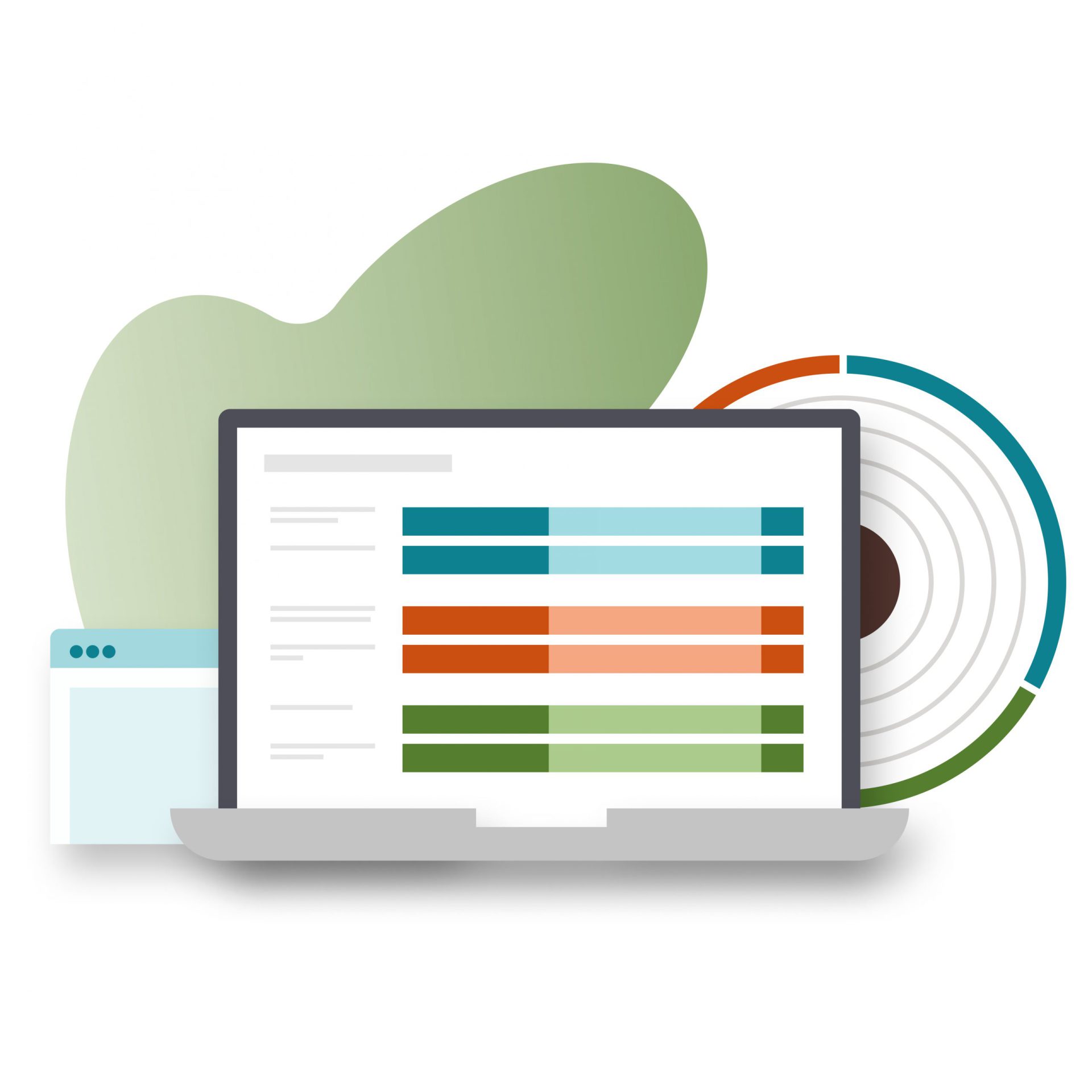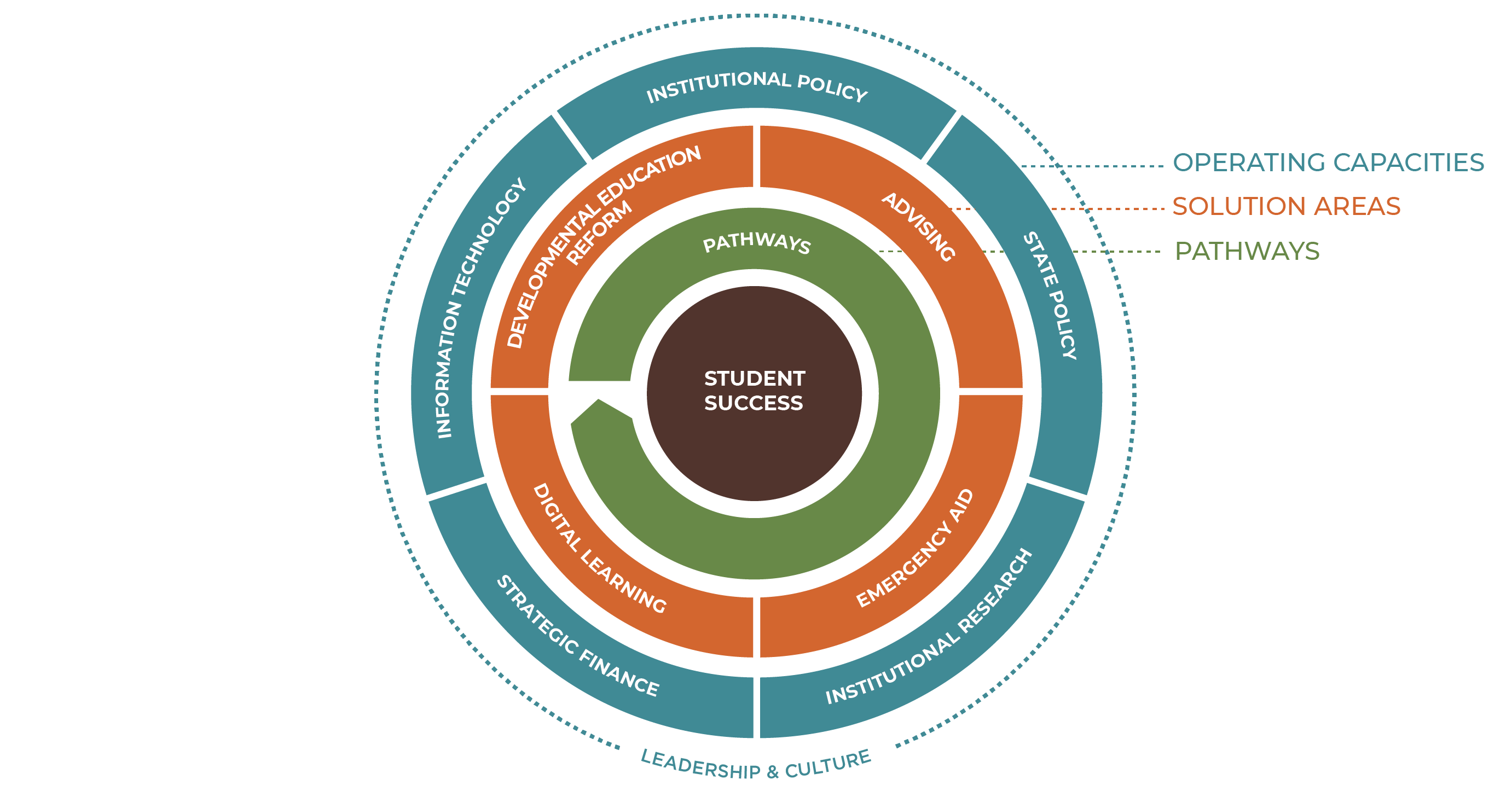
The Institutional Transformation Assessment
Transforming Institutions
Colleges and Universities are working toward institutional transformation to ensure that more students are successful at their institutions – complete credentials, degrees, and / or engage in continuous transfer to pursue an education beyond high school. The process starts by gathering information and administering the Institutional Transformation Assessment, a perception-based survey that gauges where faculty and staff members believe an institution is in terms of implementing importing student success efforts and the organizational structures that support them. Coupled with existing information (strategic plan, business plan, presidential or board priorities, state mandates, other student success initiatives), the results of the survey drive Sensemaking, a facilitated conversation that enables reflection with a cross-functional group of institutional leaders, faculty, and staff.
How this approach works
The Institutional Transformation Assessment consists of two key activities:
1. Gathering input from leaders and practitioners
The ITA has 100+ indicators (questions) over 11 topics, spanning pathways, solutions, and operating capacities. The ITA’s strength is in its breadth: it’s useful to ask how participants perceive areas of the institution that are outside of their day-to-day job.
2. Having a dynamic Sensemaking Conversation
The aggregate (anonymized) responses to the ITA can spark an insightful discussion that digs deep and connects the dots between departments and efforts to reach new insights that can spur action.The goal is to learn about each other’s perceptions and come to consensus on prioritized next steps.
- Gathering input from leaders and practitioners
- Having a dynamic Sensemaking Conversation
The ITA survey covers 11 topics, spanning pathways, solutions, and operating capacities. The ITA’s strength is in its breadth: it’s useful to ask how participants perceive areas of the institution that are outside of their day-to-day jobs.
The aggregate, anonymous responses to the ITA survey can spark an insightful discussion that digs deep and connects the dots between departments and efforts to reach new insights that can spur action. The goal is to learn about each other’s perceptions, to identify areas of strength and improvement, and to use the findings as a critical input to prioritizing and planning further action to enhance success for all students.
ITA components

The rubrics (survey questions) are the basis of the tool. They are rooted in extensive postsecondary transformation research. Collectively working on the topics covered in the rubrics leads to a faster and more significant transformation result. These rubrics were created to help an institution self-reflect on where their transformation work sits against each of the different measures. The rubrics are what bring the online survey to life. For the 2025-26 academic year, a group of stakeholders significantly revised the wording of the questions for improved clarity and ease of use.
The online perception survey itself is a mechanism to collect individual responses. When participants are completing the survey they are essentially going through a digital version of the rubrics.


Completed survey data is then aggregated into a dashboard and can be used in a variety of different ways. Participants can use the dashboard to revisit their survey responses. Institutional leaders can manipulate dashboard filters, enabling them to parse out results by factors such as groups, roles or point in time. Intermediaries can use the dashboard results to support individual institutions in their transformation work, and can also look at the survey data in aggregate across multiple institutions to see similarities and differences.
All efforts lead to the Sensemaking Conversation as the cornerstone of the entire process.

The foundational framework of the ITA
An intentional, integrated approach to institutional transformation.

The ITA is built on evidence that shows that taking an integrated approach to continuous improvement— a cycle of reflection, action, and measurement—is a promising way to support institutional transformation for student success.
The hypothesis behind the framework is that a student’s pathway to a credential is supported by solutions designed to mitigate student loss points, which are made possible by strengthening institutional operating capacities. This all exists within the unique ecosystem of the institution and their context on campus. The ITA’s structure reflects this integrated approach.
The ITA rubrics cover 11 categories—grouped into operating capacities, solution areas, and pathways—that are all critical for improving student outcomes.
Categories covered

The Sensemaking process
- Pathways
- Operating Capacities
- Solutions
- In Development
- Pathways: the institution’s ability to systematically define student pathways, map pathways to student end goals, help students choose a pathway, keep students on a pathway, and ensure that students are learning.
Original rubric authors and contributors are listed here. The questions have substantially changed, although the concepts and content that drives them have not. (Pathways, CCR and UNCF; Advising, NASPA; Digital Learning, Every Learner Everywhere; Developmental Education, Education Commission of the States; Emergency Aid, NASPA; Leadership and Culture, Harvard University Graduate School of Education; Strategic Finance, NACUBO; Institutional Research, AIR; Information Technology, Educause; Institutional and State Policy, HCM Strategists).
- Information Technology: the institution’s ability to provide leadership, faculty, and advisors with the tools and information they need to contribute to student success, support students, faculty, and staff with IT solutions, and develop and monitor meaningful student success initiatives.
Institutional Policy: the institution’s ability to change institutional policies, processes, and procedures to support, sustain, and institutionalize efforts to improve student success for all student groups.
Institutional Research: the institution’s ability to use inquiry, action research, data, and analytics to intentionally inform operational, tactical, and strategic accomplishment of its student success mission. This function – occurring both inside and outside of an institutional research office—provides timely, accurate, and actionable decision support to administrators, faculty, staff, students, and other stakeholders.
State Policy: the institution’s ability to leverage existing state policies or develop and/or advocate for new evidence-based state policies (which could include, depending on local context, legislative policies, board policies, rules and/or guidance documents) to support efforts to achieve student success at scale.
Strategic Finance: the institution’s ability to strategically and effectively allocate and manage resources in support of the institution’s vision, mission, goals, and priority initiatives.
Original rubric authors and contributors are listed here. The questions have substantially changed, although the concepts and content that drives them have not. (Pathways, CCR and UNCF; Advising, NASPA; Digital Learning, Every Learner Everywhere; Developmental Education, Education Commission of the States; Emergency Aid, NASPA; Leadership and Culture, Harvard University Graduate School of Education; Strategic Finance, NACUBO; Institutional Research, AIR; Information Technology, Educause; Institutional and State Policy, HCM Strategists).
- Advising: the institution’s focus on assessing and improving advising and student support services by leveraging people, processes, and technology, connecting advising and planning, and creating student services that are proactive, structured, personalized, and sustained.
- Emergency Aid: the institution’s ability to build and sustain an emergency aid program that provides timely grants, loans, and/or basic needs support for students facing an unexpected financial crisis.
- Developmental Education: the institution’s progress in reforming their developmental education programs to maximize the likelihood of all students completing their college-level gateway math and English courses in the first year of enrollment.
- Digital Learning: the institution’s progress in developing, implementing, and supporting an institution-wide strategy for delivering high-quality digital teaching and learning in face-to-face, hybrid, and online learning modalities for parity in learning outcomes for all student populations.
- Emergency Aid: The institution’s ability to build and sustain an emergency aid program that provides timely grants, loans, and/or basic needs support to students facing an unexpected financial crisis.
Original rubric authors and contributors are listed here. The questions have substantially changed, although the concepts and content that drives them have not. (Pathways, CCR and UNCF; Advising, NASPA; Digital Learning, Every Learner Everywhere; Developmental Education, Education Commission of the States; Emergency Aid, NASPA; Leadership and Culture, Harvard University Graduate School of Education; Strategic Finance, NACUBO; Institutional Research, AIR; Information Technology, Educause; Institutional and State Policy, HCM Strategists).
Capacities to be developed for the 2025-2026 academic year
- Transfer,
- Teaching & Learning, and
- Governing Boards.
During the Transformation Process, faculty and staff members take the ITA and then participate in Sensemaking to discuss results and prioritize next steps. The facilitated conversation involves multiple stakeholders in a three to four hour workshop. The goal of the conversation is to help institutional stakeholders learn more about areas of strength and to help prioritize and plan for further actions to improve student success for all groups.
The ITA process broadly consists of:
- Prepare: Execute planning activities with the end goal in mind.
- Collect data: Deploy the ITA survey, collect and analyze results, and prepare to facilitate the Sensemaking Conversation.
- Sensemaking: Conduct the Sensemaking Conversation and capture plans and outcomes.
- Debrief: Identify continued efforts after the Sensemaking Conversation.
*Updates to this process coming soon. For more information contact: itasupport@gardnerinstitute.org
